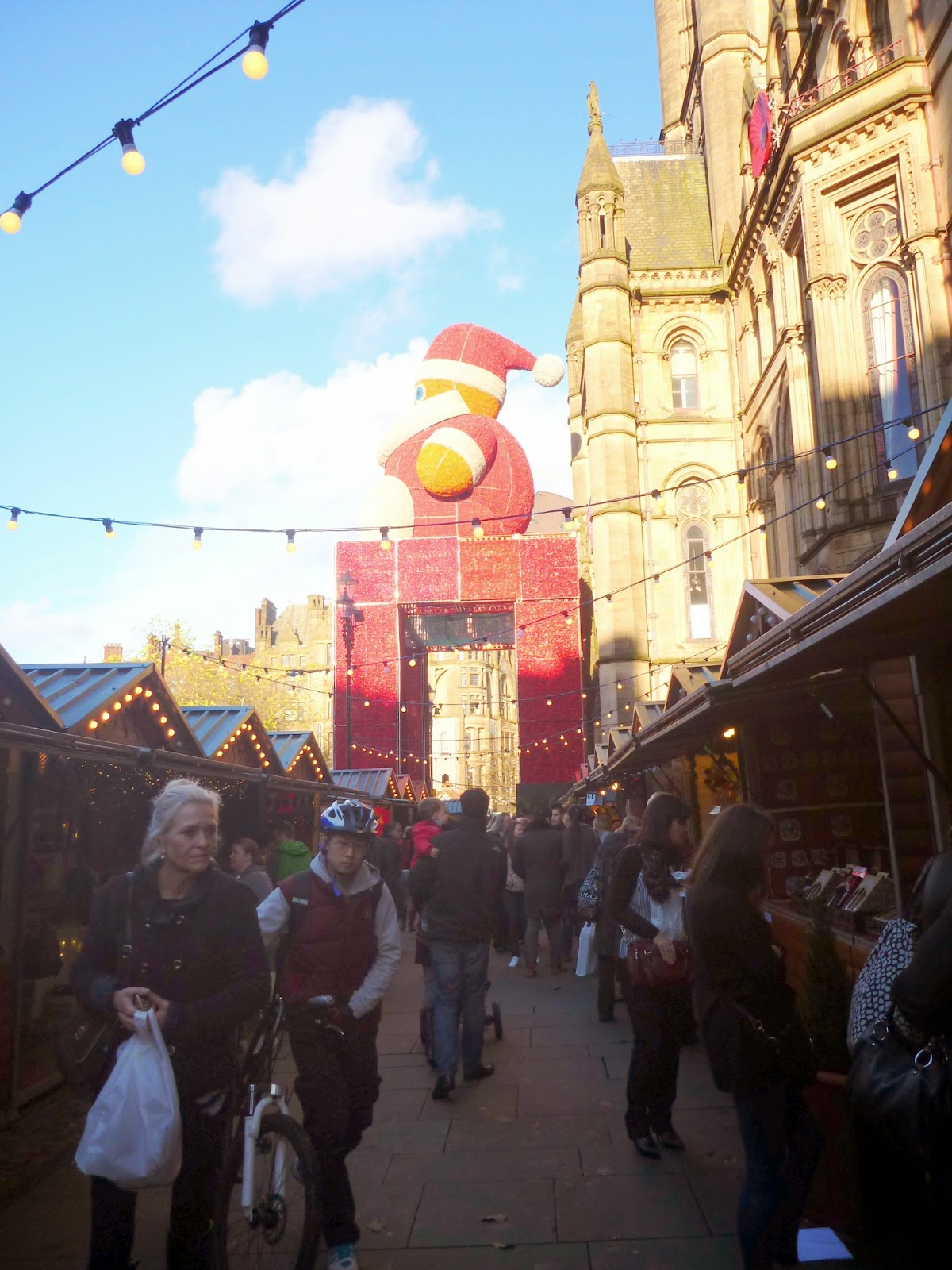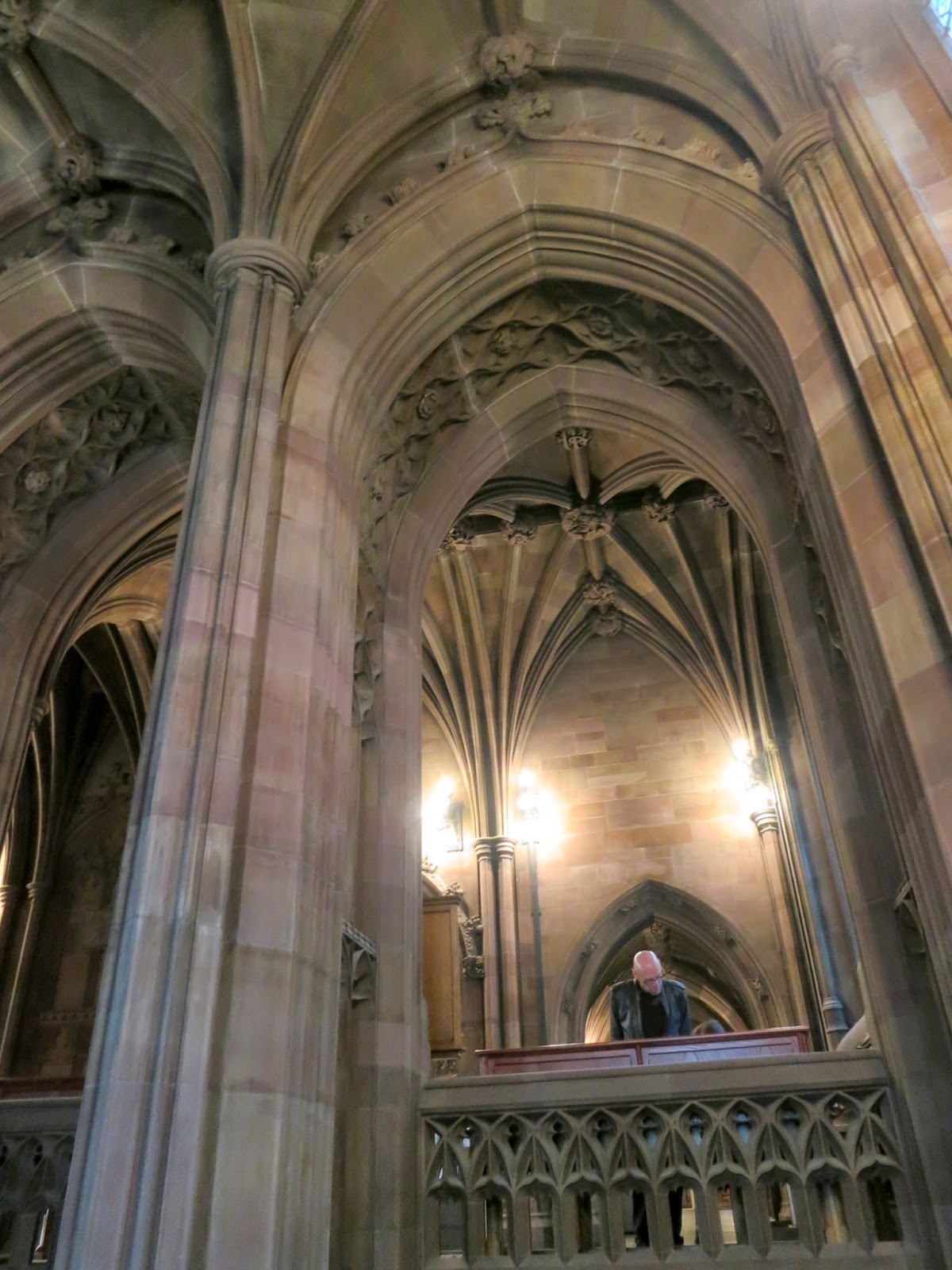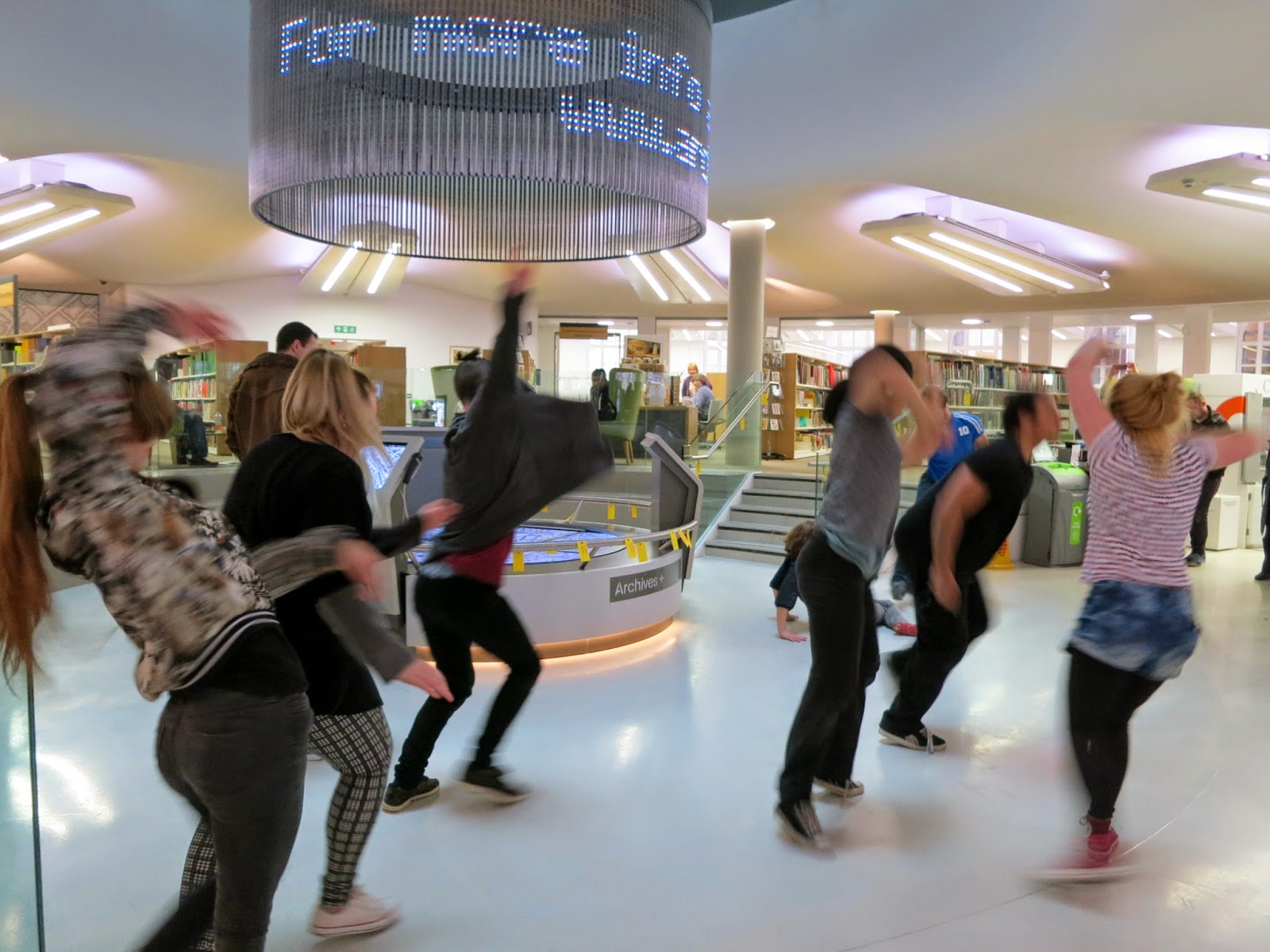John Rylands Library in Manchester.
A late Victorian building, the library is situated on Deansgate and was opened to the public in 1900.
The style of the building is primarily neo-Gothic with elements of Arts and Crafts movement in the ornate gatehouse facing Deansgate. It's been granted Grande I listed status.
The library was founded by Enriqueta Rylands in memory of her husband. She purchased a site on Deansgate and commissioned a design from Basil Champneys. The building is constructed of Cumbrian sandstone and of dark red Barbary stone from Penrith.
We started from the first floor and worked our way down. This is the ante-room to the
magnificent main reading room on the first floor. It is lit by orienl windows in the reading alcoves supplemented by high windows along both sides. There are also two large stained glass windows with portraits of religious and secular figures, designed by C.E. Kempe and bronze work in the art nouveau style by Singer of Frome.
one of the reading alcoves.
The library's special collections are believed to be among the largest in the UK and include medieval illuminated manuscripts; examples of early European printing including a Gutenberg Bible; the second largest collection of printing by William Caxton; the most extensive collection of the editions of the Aldine Press of Venice; the earliest extant New Testament text; and personal papers and letters of Elizabeth Gaskell and John Dalton, amongst others.
The portrait statue of Enriqueta Rylands in white marble was sculpted by John Cassidy and was given the moustache treatment when we were there.
The whole place, including the stairwell, is utterly magnificent, intricately sculpted with 'Shawk' stone from Dalston.
Looking up as we were going down the stairs
looking up as we reached the mezzanine
more stairs to reach the next level
looking up
an old printing press

and printer's trays, tools and blocks
We then walked along this corridor, as grand as the rest of the building
and reached this intriguing notice which was part of the Harmonious Society exhibition which was running in six venues across Manchester - it looked very interesting, but our time in Manchester was very limited so unfortunately we did not have the chance to explore
 Samson Young, Muted Situations, 2014
Samson Young, Muted Situations, 2014
From the explanatory notice next to the video installation: '
In this video installation Samson Young directs and stages a muted music performance, requesting that performers play with no less energy or seriousness but try to suppress and silence the 'sound-producing' part of the act. By removing the sound, audience expectations are thwarted. Do we imagine harmonies or discordant sound?'
And: 'Suppress the consciously sound-producing constituent of the performance. As a result other sounds will be revealed, including but not limited to the breathing sound of the musicians, the sound of their moving bodies, the sounds that their left hands produce when pressing on and sliding up and down the string, and the natural resonance of the instruments' bodies that is triggered by the tapping action of the left hand fingers'.
And: 'Mute is not silence. Muting is not the same as doing nothing. Rather, the act of muting is an intensely focused re-imagination and re-construction of the auditory. It involves the conscious suppression of dominant voices, as a way to uncover the unheard and the marginalised, to make apparent certain assumptions about hearing and sounding'.
I went down some more stairs while Ken looked down
walked along this gallery
where
Annie Lai Kuen Wan's Lost in Billiterate and Trilingual, 2014, exhibition of 18 ceramic books was displayed. They are moulded from
'various dictionaries that form an essential part of life surrounded by the unique linguistic dynamic that exists in Hong Kong; where Cantonese, English and Mandarin are all regularly used. By recreating the books in ceramics they become fragile, cannot be opened and lose their text and meaning'.
On the floor of another passageway we found Zhao Yao's Wonderlands, 2014, who has created 'coloured carpets featuring aerial views of Chinese airports undergoing development and expansion, reflective of the country's rapid urbanisation. Visitors are invited to walk across the carpets, like the travellers who pass through these airports, and when the exhibition is finished, they will bear the traces of those who have passed by'.
Through another door and gasp! the modern extension of the building: white, minimal, and a 'suspension' of coloured glass tiles right in front of us
the stairs were very impressive
so beautifully done
sensitively acknowledging the old part of the building - the stained glass windows boxed-in the radiantly white walls.

















































